Social media has long broken its traditional role of brand awareness and engagement, and eased into the territory of lead generation and customer service. However, with the social ecosphere going berserk and growing at the mad pace of close to 40-50% every year, (both in terms of user and brand invasion), reaching the relevant audience is getting increasingly tough.
There was a time, when it was possible to reach a fair share of people organically, but we all know how hard that is now on Facebook. Twitter is more generous, displaying all the tweets sequentially, but this generosity is the bane here. With the constant stream of tweets flooding you, it’s really hard to look at anything in particular. So, what do you do to grab attention?
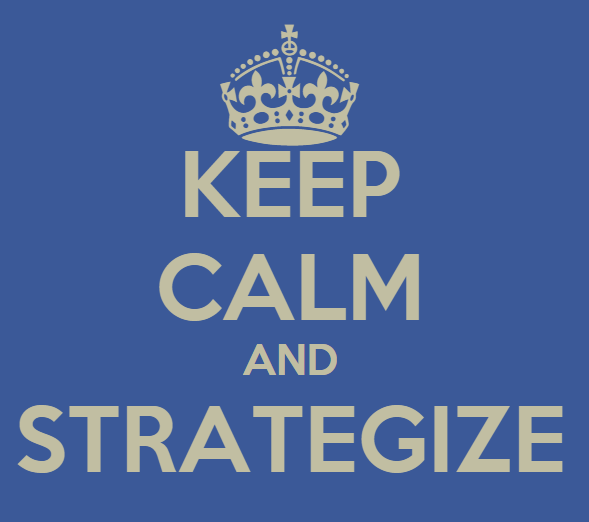
Just to put things in context, social media traffic can be great, providing great conversion opportunity. I have evidence. Take a look at some statistics from LeadSquared’s own Analytics data:
1. The average session duration for visitors coming from social media is 48.08% higher than site average.
2. The bounce rate for these visitors is 80% lower than the site average.
3. Pages viewed per session are 31.96% higher than the site average.
4. Goal Conversion Rate is 39.05% higher than the site average.
This proves how amazingly well-engaged is the traffic coming from social media.As of 2024, there are 5.04 billion people in the world who use social media – over half the global population.
So, let’s talk about what social media tactics can you employ to generate high quality leads.
(A little heads up: This post is a little Facebook heavy – I would soon do a sequel including more social media channels)
Strategy 1: Have a strategy, complete with goal definition
1. Create an audience persona
The very first thing to do is to identify:
a) Who your target audience is (persona)
b) What are the social media channels they frequent
c) What devices do they use, and
d) What influences their buying decisions
This information would help you create a customized social media strategy as these preferences vary for different demographics.
i) For instance, take a look at the most popular social media channels overall, and the demographics using the respective channels by gender.
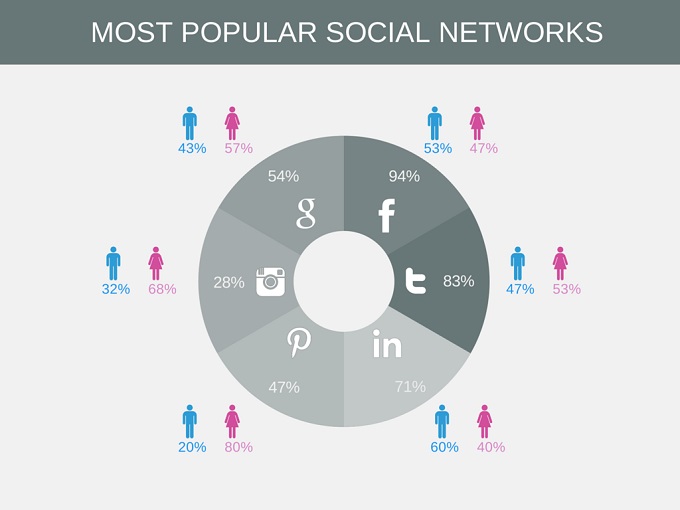
ii) Figure out what social media platforms your target age demographics frequent.
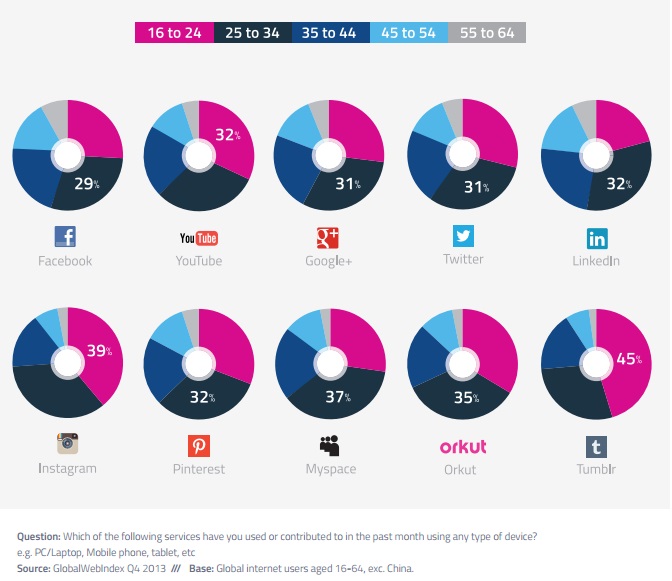
iii) Figure out what social networks are popular in the geography that you are trying to target:
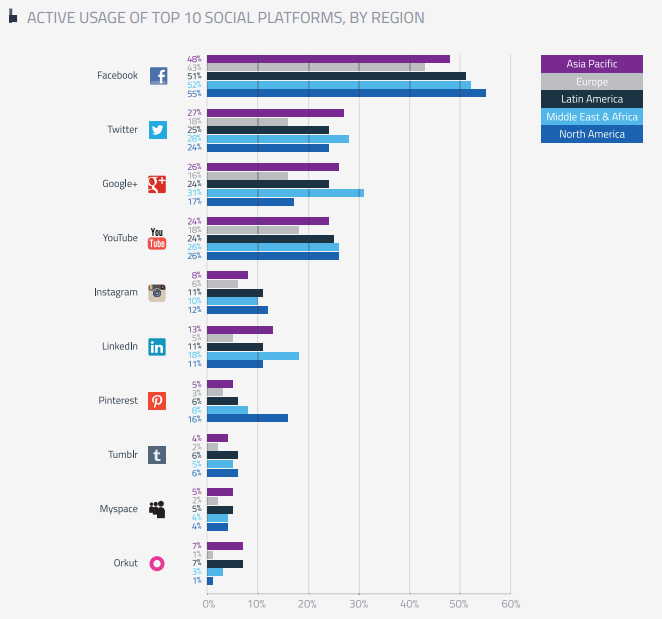
Now, I know that these stats are great, but they are also external. What if you are an outlier? What if your target audience varies slightly from all your industry trends?
For that, look into the Audience section of your Google Analytics report; it would give you detailed insights about the demographics of your audience as well as their interests, thus allowing you to create interesting social campaigns.
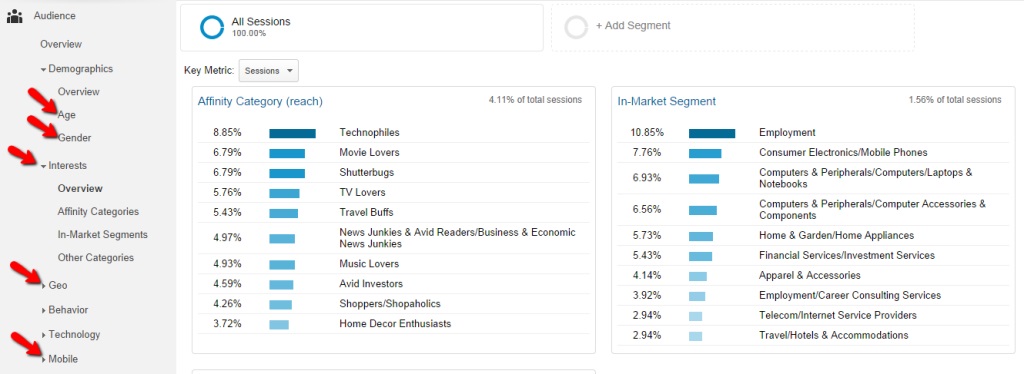
This data would give you a pretty good understanding of your own audience, and create social media tactics accordingly.
2. Set your campaign goals
The second part here is to understand what your goals are; it’s pretty simple in this case – your goal is lead generation, i.e. to improve the number of conversions. So, define what a lead means to you.
Also, here are few examples of how social media agencies gain clients.
Hint: It isn’t a new like, or a new follow. You should aim at actual lead details (at least a name and email ID).
Here you have to remember to shift your focus away from vanity metrics, like “No. of likes”
Yes, it’s awesome that your likes are increasing, but that should not be a success metric for your lead generation campaigns. Instead measure the number and quality of leads that you are generating.
To measure if your social campaigns are aligned, you can set conversion goals in Google Analytics. Here’s how the social conversion report looks for LeadSquared.
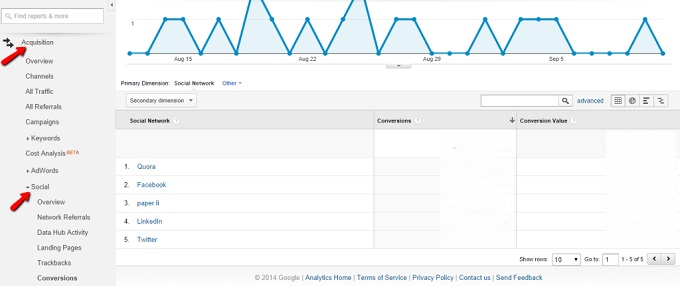
I quoted “quality”, because it is also important to make sure that the leads you are generating are
a) Not junk (abc@xyz.com), and
b) Fit your ideal customer persona.
If, for instance, you are trying to sell adventure travel packages for couples, and your campaign is attracting families, then something is wrong. Similarly, if you are trying to sell a high-end travel package, and you capture budget travelers’ details, it wouldn’t be much help to you.
Now, that you have your campaign metrics set, let’s move on to the different ways in which you can use social to generate leads for your business. Remember that the strategies would be relevant for you if your target audience is on the respective platforms.
Strategy 2: Invest on Facebook Ads (the right way)
Facebook ads in general make pretty good sense, as with all the targeting options available, you have the capability to generate highly qualified leads. And I speak by experience; we have run Facebook campaigns in the past, and they have worked quite well for us, both in terms of cost per lead and the quality of leads. It has been reported to work extremely well for B2C companies as well.
1. First Time Lead Generation Campaign
This can work really well, because of the amazing targeting options available.
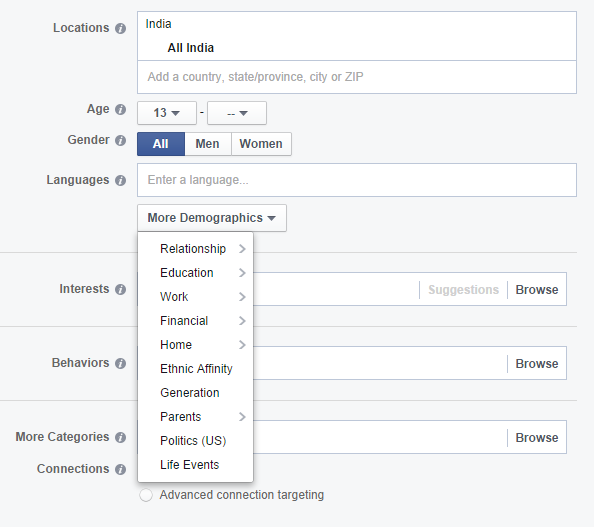
a) So, basically you can closely target people based on all the demographic data you found about your audience:
i) age
ii) location
iii) gender
iv) languages they speak
v) advanced demographics, like financial details etc.
b) Interest targeting
c) Behavior Targeting: This includes everything from browsing behavior, to online buying behavior, interest in events to traveling behavior, which is pretty cool if you are a B2C marketer.
2. Repeat Sales
Now, if you are the kind of business, where repeat sales make a lot of sense, then you can use Facebook’s custom audience feature very efficiently. The kinds of business that would fall under this category are online retail businesses, travel businesses, health and beauty businesses and basically anyone else in services industry.
How can you use it?
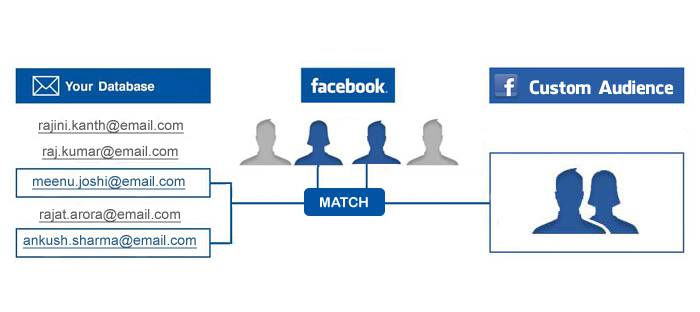
In most cases, you would already have a list of people who have made a purchase from you in the past; you can upload this list onto Facebook, and create a custom audience to market a similar category of products. Examples:
a) If you are an online retailer, and someone bought ‘Lord of the Rings’ books from you in the past, you can show the ads for ‘Games of Thrones’ to only this audience.
b) In travel business, if someone booked a family vacation from you last year in June; you can start showing them packages for more family tours from April-May itself (research shows that a travel planner usually takes around 40 days to finalize a tour/package). You can target them during this phase. And, because they already booked a tour from you in the past, the credibility would be good.
3. New audience of the same persona
If you are able to upload a custom audience (that fits the perfect persona of your target audience – if they have bought in the past from you), you can create a lookalike audience as well.

Let’s take an example of how using Facebook Custom Audience can be used in addition to your traditional email campaigns to generate better business leads.
Example:
Business – A Private MBA Institute
General modes of lead generation
a) 3rd Party lead generation websites (Sulekha.com, Shiksha.com)
b) PPC Ads
c) Facebook Ads
d) Buying Leads (not a recommended practice, but still is one of the most widely used).
The leads generated from PPC, Facebook, and Organic are better quality leads, if you have done the targeting properly.
However, when the leads are being purchased, or generated from 3rd party websites, then the usual strategy is to spray and pray. You send a bulk email campaign, and hope to capture qualified leads from that.
Now, if you absolutely want to buy these leads (though we do not recommend it), creating a lookalike audience would be putting it to a better use, in addition to your usual email strategy.
(Note: Creating a lookalike audience would generally work even better, if your leads have been generated using targeted Facebook and Google Adwords campaigns, and through other organic efforts.)
Benefit 1 : Better leads at lower cost
Let’s compare the cost of an email campaign to that of a Facebook campaign:
Suppose, the cost of sending 1 email = 10 paisa
Your Target Audience (contact volume) = 10,000
Total Cost for 1 Campaign = 1000 Rs.
Quality Leads received / Campaign = 10 (on an average, maybe more)
Cost/ Relevant Lead = 100 Rs.
If you invest the same amount (1000Rs.) On Facebook
Offer – Apply for an MBA
Demographic Targeting – Age : 20 to 25
Interest targeting: #MAT,#CAT #IIM #MBA and many more
Suggested Bid that Facebook shows me: 6.25 Rs. To 11.25 Rs (per click)
So, no. of clicks I can get in 1000 Rs, if I choose the minimum, i.e. Rs. 6.25 = 160
Clicks Average Conversion % (if the Landing Page is good) = 20% = 32 Leads.
If you give an offer, like a free counseling session, the conversion rate can increases to 50-70%, which means at least 80 Leads.
And they are all good leads, because not only are you targeting by a lead list that you bought, but also by other filters, like age brackets, interests etc.
Cost Per Lead = 1000/32 = 31.25 Rs./Lead which is a good deal.
(Note: This data was for Normal Interest Targeting (without uploading a Custom list on Facebook) – because I didn’t have one.)
Tech Crunch reports that Custom Audience increases sign-up conversion rate by 43 percent and decreases cost per lead by 30 percent, compared to Standard Targeted Facebook Ads.
So, when you are doing Custom Audience + Targeting, the cost would go further down by 30% = Rs. 21.875
Benefit 2: Lesser drop-offs = More leads
There are few roadblocks in the journey of an email from your computer to the actual lead capture:
1. Email Sent
2. May go into spam
3. If it escapes spam, the email maybe opened/not opened
4. If opened, the email may be clicked/not clicked
5. If clicked, form filled/not filled
When you run Facebook ads, there once again are roadblocks, but their number is reduces:
1. Facebook ad displayed
2. Ad Clicked/Not Clicked
3. Form filled/not filled.
Now, more number of steps = more drop-offs (as the drop offs would happen at each step)
Benefit 3: Higher number of audience reached
In case of email
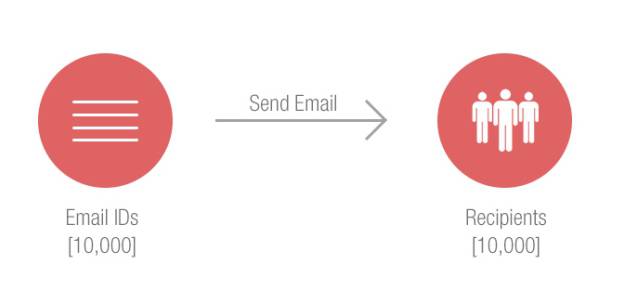
In case of Facebook
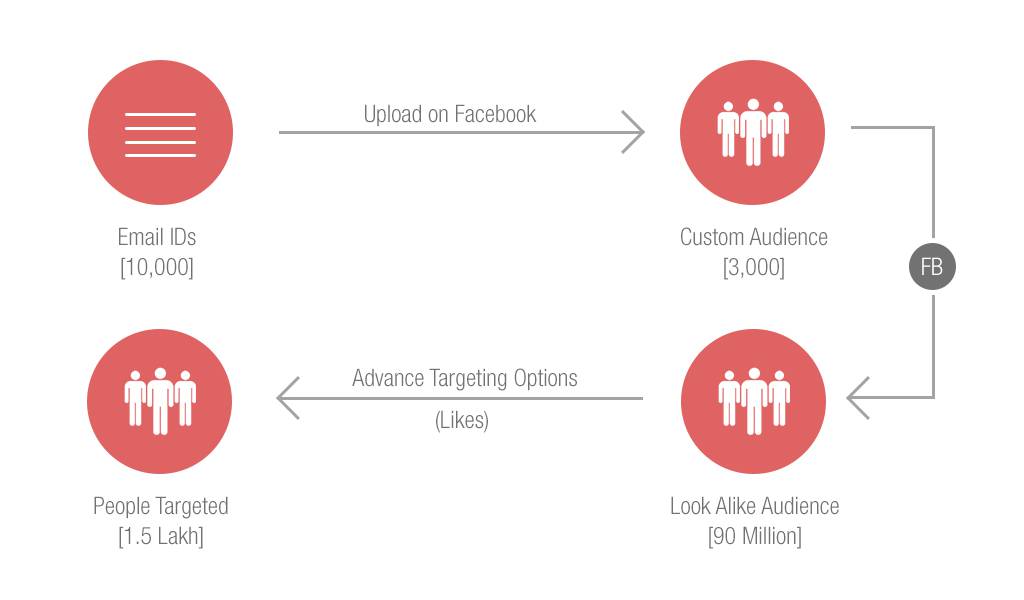
So, the audience that you can hope to target is much higher in case of Facebook ads than your email list.
Benefit 4: You are being “less” intrusive
Another consideration is that emailing people without prior consent is generally an intrusive practice, and is frowned upon.
Strategy 3: Use mobile-only campaigns + responsive landing pages
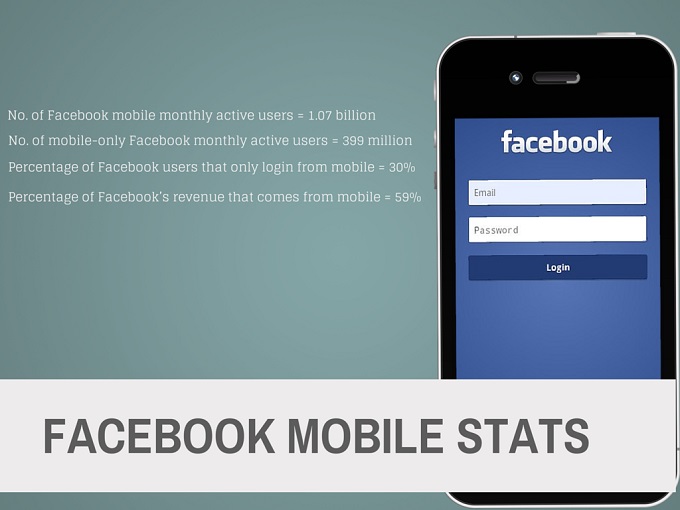
Now, with these amazing stats in favor of mobile, I am sure you don’t want to miss capturing leads. So use, responsive landing pages/website, and run this campaign.
In case you don’t know, Facebook allows you to create mobile-only ads, so you can easily determine how they are working out for you.
Strategy 4: Google Pages for Local Businesses
Who’s it relevant for?
All sorts of local businesses:
a) Health and Beauty Clinics
b) Fitness centers
c) Restaurants
d) Other local businesses
e) Multi-centered businesses
Google Local pages can be great for improving your direct store walk-ins; the reason being these results along with the reviews occupy the topmost real estate on search just behind the ads.
How to do it?
1. Claim your local business and verify it
2. Put everything on your local page, including your business address (verify it for it to show up in Google search on mobile), phone number, business hours etc.
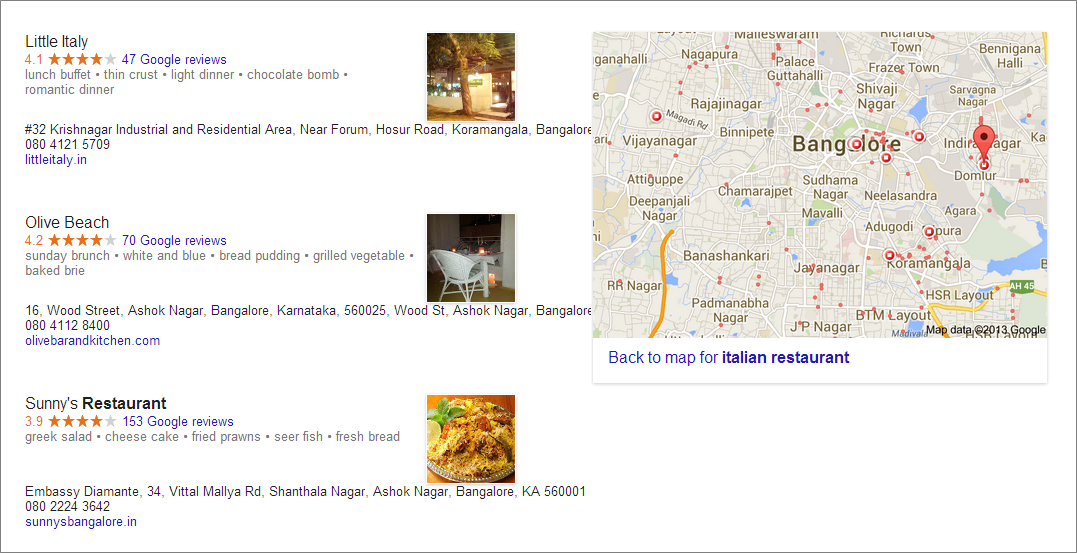
3. Leverage Google Business View
Especially, if you are in a business, where the visual appeal of the locations is important. Example Salon and Spa Businesses.
When someone searches for your brand name on Google, they can get a virtual tour of your facility.
You can even link these images to your business website. But, it, of course, comes at a cost, and using this would be a business decision.
4. Leverage Google Reviews
Let’s face it; Google controls search – so to increase direct bookings/footfalls, you need to be on Google’s properties to occupy the best real estate. Google Reviews are one amazing way for you to do that, so if you are in an industry where you can ask customers for review, do that. It would really help, believe me. Look at all these hotels right below the paid ads, only because they have a Google Local presence, and a good number of reviews.
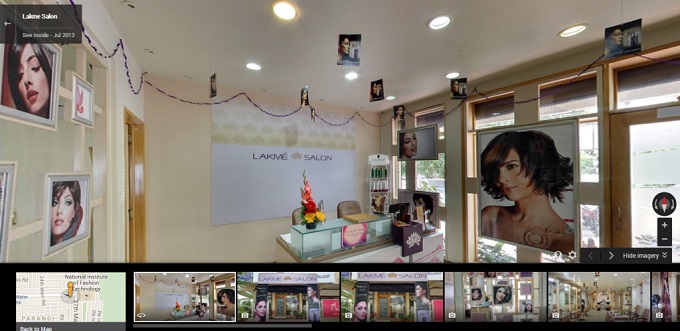
 It helps enormously in mobile search as well
It helps enormously in mobile search as well
a) This is how the local businesses show up on Mobile . There is a Click to Call option there as well (direct lead generation method. Best part – it is free)
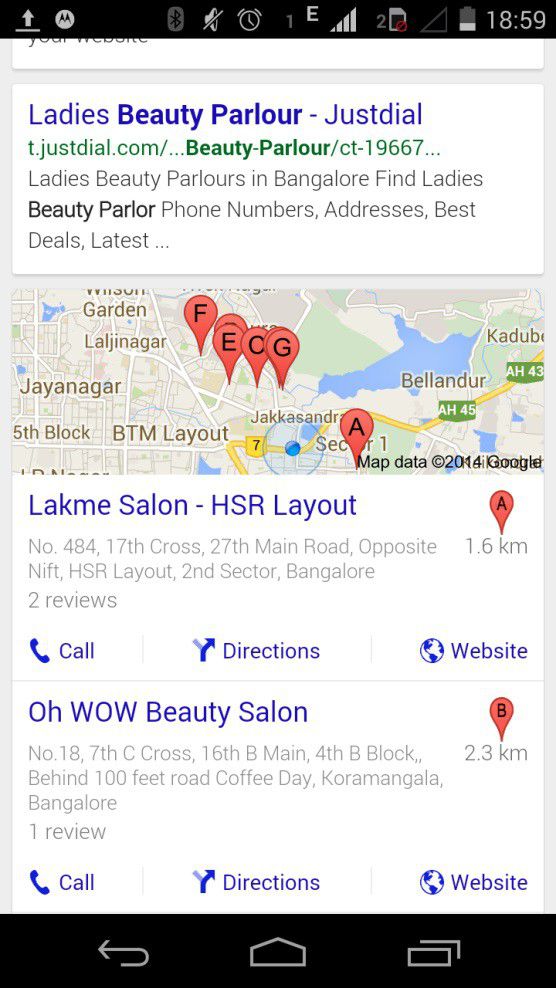
Remember, you have to verify your business, otherwise you do not get any of these benefits
Strategy 5: Facebook Custom Tabs
So, yea I have spoken a lot about Facebook custom tabs before, and they can be great to get you a few leads if people somehow land directly on your timeline, but the chances are pretty slim, especially now that the custom tab icons have been reduced to a row of navigation below your cover image.
But, you can still make the best out of it by using a cover image that has a directional cue and a CTA + custom tab. Take a look at this example from WishPond. You can check this post to find how to create a Facebook custom tab.
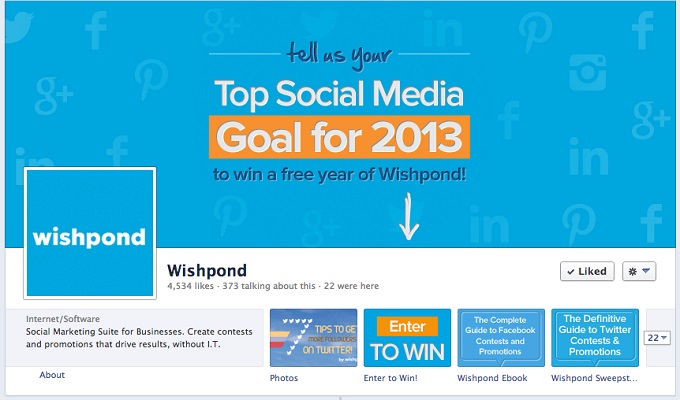
So, these were a few social media tactics that you can deploy for lead generation. Your turn; what social media lead generation strategies are you using?






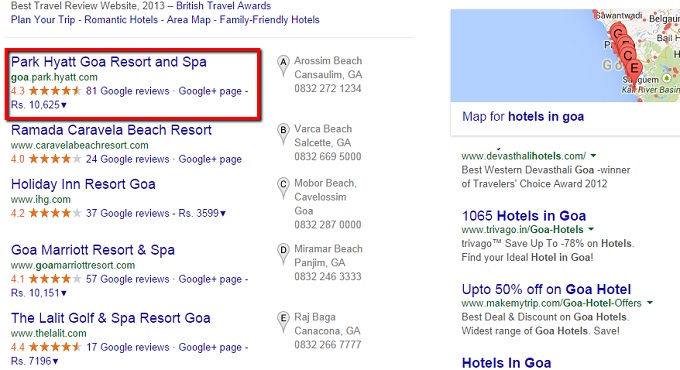 It helps enormously in mobile search as well
It helps enormously in mobile search as well


